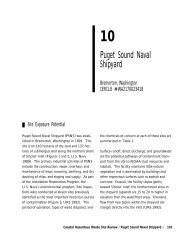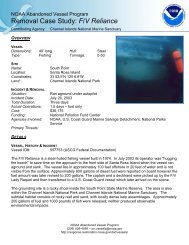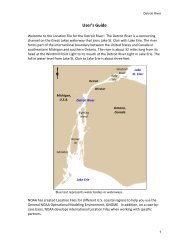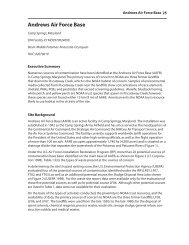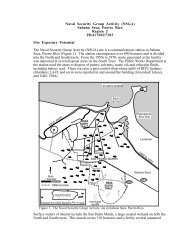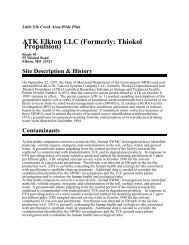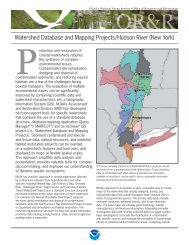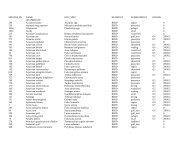Water Cycle Game - Instructions
Water Cycle Game - Instructions
Water Cycle Game - Instructions
- No tags were found...
You also want an ePaper? Increase the reach of your titles
YUMPU automatically turns print PDFs into web optimized ePapers that Google loves.
The impact of gravity on the water cycle is viewed elsewhere as well. Liquid watercertainly conforms to the laws of gravity as it flows. But even ice on mountaintopsobeys the laws of gravity as glaciers slowly move downward.The following role-playing game allows you to better understand thecomplexity of the actual water cycle. Stations are set-up for each of ninedifferent compartments of the water cycle. A roll of the die at each stationtells you where to move next or to stay. This game is meant to be playedwith a group of people, so that the path each player takes can becompared with everyone else’s. (It can be done over and over by oneperson to achieve the same results though. Adjust the following instructionsaccordingly.) Trackers – either colored beads or strips of paper areused to track each person’s journey through the water cycle.Materials• Nine special cubes or die with movement instructions (download and print this file)• Nine station illustrations or signs (download and print this file)• A timer• Any noisemaker, such as a bell or whistle• Nine different colors of beads or paper strips (other than black)Preassessment• Explain to the students that they will be tiny bits of water (molecules) in the water cycle. Havethem then list all the places where water can be found in the water cycle. Compare their list to thenine compartments.• Before handing out the instruction die to each station, ask the students at each station to listwhere they think water might go next from their station. Have them compare their list against theinstruction die.• Introduce the concept that water may not go anywhere from a station for some time. Also, havestudents list what forms of water (i.e., states)—liquid, solid, or gas—might be involved in possiblemoves from their stattion.<strong>Instructions</strong>1 Set up stations for the nine die. Place colored beads or paper strips (the trackers) in the die, with onlyone color in each die.2 Randomly assign people evenly among the stations. If there is an odd number, assign the odd personto the ocean.3 To start, each person collects a tracker from their first station, and then rolls the dice. Allow enoughtime for everyone at a station to roll.4 At the sound of the signal, each person then follows the movement instructions from their dice roll andmoves to that station. At the new station, they collect a tracker there and then roll the dice at thatstation. If their instructions were to stay, they should collect another tracker and then roll the dice witheveryone that just moved to that station during the turn.5 Sound the signal at even intervals (the amount of time depends on how many people play) to designateeach turn of play. At each turn, players move; collect a tracker from their new station; and then rollfor new movement instructions for the next turn.6 After a pre-set number of turns (at least 9), compare the trackers from one player to the next. Observethe differences. Notice how long a player might have stayed in one station



